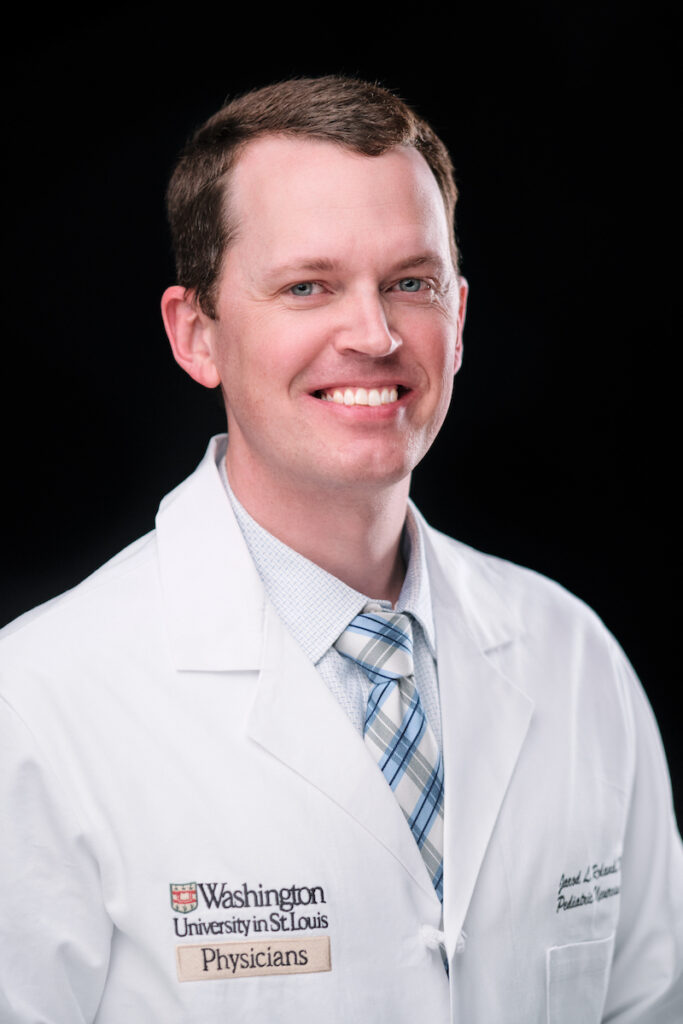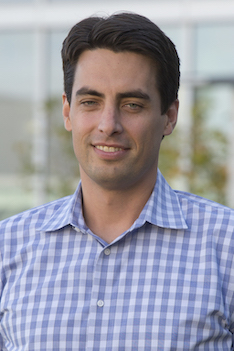The evolution of neuroimaging has been a game changer for neurosurgeons and neurologists. At the Washington University School of Medicine in St. Louis, two doctors are working together to harness the power of advanced imaging for their smallest patients and to improve the cross disciplinary treatment of brain disorders in children.

When Jarod Roland, MD, was a fifth-year neurosurgery resident at WashU, he became interested in the use of functional Magnetic Resonance Imaging (fMRI) for pediatric patients.
“Trying to get a child to sit still during an fMRI can be very difficult,” said Roland. “Sometimes after we receive the imaging data, it’s just not good quality data. As I was talking to more people at WashU about this, they kept telling me about a faculty member in neurology. They said, ‘if anybody knows anything about fMRI research in pediatric patients, it’s him.’ So, I hunted him down and we’ve never stopped talking since.”
The “him” that Roland refers to is Nico Dosenbach, MD, PhD, associate professor of neurology. While a junior level researcher, Dosenbach founded the Midnight Scan Club in 2013. He and his colleagues would take turns having their brains scanned at midnight, when the cost of a scan charge is considerably more affordable, to obtain high quality MRI data.
“Nico’s lab can make phenomenal brain maps that are very accurate and extremely precise,” said Roland. “Whenever I see the level of imaging detail from the clinical side, I’m often amazed because it’s nowhere near the level we get to on the research side.”

“Jarod is very special,” said Dosenbach. “There are not that many pediatric functional neurosurgeons who can also code flawlessly. He’s extremely technology forward and it’s unusual to find that much skill packed into one person.”
When Roland completed his residency training and took a faculty position at UCSF Benioff Children’s Hospital, he and Dosenbach continued to work from afar onresearch projects. In late 2021, Roland came back to WashU as an assistant professor of neurosurgery and director of the Pediatric Epilepsy Surgery Program. Returning to St. Louis also meant more collaboration time with Dosenbach. Currently, the duo are committed to building an infrastructure where children with brain disorders can be evaluated by a multi-disciplinary team.
“The vision Jarod and I are working on together and are recruiting people for is to bring the latest and greatest advanced neuroimaging to the clinical world”, said Dosenbach. “Starting with the areas where the clinical stakes and costs are the highest like pediatric epilepsy surgery.”
The hope is that crossing departmental boundaries will lead to faster, safer and more effective treatments for pediatric patients.
“Collaboration is really important from the research and clinical divide,” added Roland. “We need to be smart about how we integrate studying the brain in a noninvasive way around the routine clinical care we’re doing every day.”
Dosenbach and Roland consider themselves lucky to work under pediatric division directors and department chairs who are always encouraging and supportive of their work.
“The spirit of collaboration between WashU’s neurosurgery and neurology departments and the spirit of transiting from research to clinical care comes from the top down,” said Dosenbach. “All that matters is to do good research and help kids.”
Learn more about the Pediatric Epilepsy Advanced Technologies Clinic (PEATC), a multidisciplinary concierge clinic offering the highest level of care for children and young adults with complex, treatment-resistant epilepsy.